Hot underwater raids beginning of the Cold War
In the era of the Cold War, beginning in the second half of the forties, the United States government redirected the attention of its intelligence services to the activities of a former anti-Hitler coalition ally. At the same time, the Navy of the USSR was a special object of attention. The Soviet fleet at that time was developing at a rapid pace, increasing its combat potential quantitatively and qualitatively. He became an oceanic, nuclear missile, capable of operating far beyond the immediate seas. All this greatly disturbed the US military leadership, which demanded more and more information from intelligence. It was from those first years of the Cold War that the concepts of “clandestine operations”, “electronic espionage”, “agents”, “defectors” became firmly established in our consciousness, and they were associated for the common man with intelligence activities during the period of tough confrontation between the two systems. However, much less is known about the role that submarines played in the invisible war.
In the early post-war years, US intelligence activities against the Soviet Union were most carefully concealed, which was a manifestation of “delicacy” in relation to the recent anti-Hitler coalition ally. In this situation, submarines, by their very nature, literally attracted to covert operations from the very beginning, became an effective means of obtaining valuable information about the state and military secrets of the opposing side.
In the late forties, the idea of nuclear power for submarines existed only in the bold designs of scientists and engineers. Therefore, at the initial stage, diesel submarines were used for reconnaissance purposes off the coast of the Soviet Union, although they were improved according to the latest technological achievements of that time. For the first time in 1948, diesel submarines - Sea Dog and Blackfin - were sent to the Bering Sea to test their intelligence capabilities to obtain information about the activities of the Soviet Armed Forces. At the same time, special attention was paid to the Soviet Navy Fleet, and above all, his submarine forces.
As a result of the division of the German fleet, the winning countries received experimental submarines in the form of trophies, which represented a qualitatively new leap in submarine shipbuilding. The USA and the USSR took full advantage of the achievements of German engineering. First, the American and British, and then the Soviet submarines began to be equipped with snorkel - a device that allowed them to remain under water for several weeks, while preserving their secrecy as much as possible. New hydroacoustic stations were installed on the boats, which, in contrast to the traditional acoustics of the Second World War, also operated in the passive mode, without being unmasked.
The Americans were seriously afraid that the Soviet Union, using these latest technologies, would significantly modernize its submarine fleet, and moreover, would begin to operate actively off the coast of America. However, they were most worried about the German secrets that fell into the hands of the Russians regarding the achievements in the field of rocket technology. At the same time, the captured V-1 and V-2 and their documentation were also in the hands of the Americans, who also began intensive work on the development of ballistic and cruise missiles, including sea-based ones. By the end of the forties, the United States already had an experimental prototype of the Lun rocket launched from special floating platforms. From various sources, Americans knew that in the Soviet Union, test launches were carried out from ground-based launchers and from submarines in the Barents and White Seas.
It is precisely with the attempts of Americans to use submarines to obtain intelligence about the testing of Soviet missiles, one of the tragic pages in stories submarine forces of the US Navy, which opened an account of the victims of the Cold War.
This happened with the Kochino diesel submarine, which was the last American submarine launched during the war. Subsequently, it was upgraded among other submarines in order to increase submarine autonomy and was ranked as Gappi. In the 1949 year, Kochino with the same type of Taek was transferred to the UK to work out passive hydroacoustics. Both submarines took part in a series of joint exercises with the British on search and conditional destruction of enemy submarines.
Commander "Kochino" Puerto Rican commander R. Benitets, who managed to make war with the Japanese in the Pacific, commanded. Over the years spent under water, in the most dangerous moments, he has established himself as a courageous and cold-blooded officer. Now, in July, 1949, he was appointed to command the boat, whose name, translated from the Spanish for Benitets, means "pig." Although, in fact, Cochin is a little-known Atlantic fish. By tradition, almost all American boats were assigned fish names.
Taking the submarine, Benitets did not receive the usual order to work out the mission in combat training grounds. But on the ship arrived a new officer - someone Harris Austin, who turned out to be an expert in radio interception. When he was an order declaring the submarine experimental intelligence laboratory. Also, the order prescribed, after the installation of reconnaissance antennas and radio receivers, to make the transition to the Barents Sea in the region of Murmansk to monitor the activities of our Northern Fleet.
Harris Austin was supposed to intercept telemetry radio signals when conducting test launches of new Soviet guided missiles, and in fact the submarine fell into its full possession.
But not this worried Commander R. Benitets. He was worried by the fact that for mounting the reconnaissance equipment, a large number of holes had to be drilled in a solid hull, and even without it, Benitets considered the very idea of sailing in the harsh northern sea too adventurous.
By the end of the summer, the preparation of the submarine for the first reconnaissance campaign was completed. On the wheelhouse mounted a pair of antennas, which protruded to the sides like ears, confirming with all appearance that their purpose. In the middle of August, with the observance of all measures of secrecy, "Kochino" went on a campaign accompanied by "Taek". Their path lay to the north, to the shores of our Arctic.
20 August "Kochino" and "Taek" diverged in the waters of the Barents Sea. "Taek" was faced with the task of testing a new hydroacoustic station (GUS) in polar waters. A "Kochino" went to the coast of the Kola Peninsula to perform the main task. Since that time, Benitets was obliged to control the submarine by order of the "passenger" Austin, determining the course depending on the need for interception, signals of interest to American intelligence.
To ensure the reception of radio signals, it was necessary to find the boat at the depths at which part of the cabin rose above sea level, and in case of strong waves, the submarine was completely thrown to the surface. This, of course, did not contribute to the preservation of secrecy, and the conditions of the polar day further increased the risk of detection by the Soviet Navy ships or fishing vessels, of which there were quite a lot in those waters at that time. As a result, the commander with Austin decided not to approach our coast closer to 120 miles.
For four days of listening to the air, nothing interesting was found. Contrary to the assumptions of analysts from Norfolk that the USSR launches missiles day and night, this was not confirmed. However, the second part of the combat mission remained - to work out, in the cold northern waters, the task of searching submarines using the latest hydroacoustic stations. Early in the morning of August 25, having established an initial visual contact, the submarines began joint maneuvering.
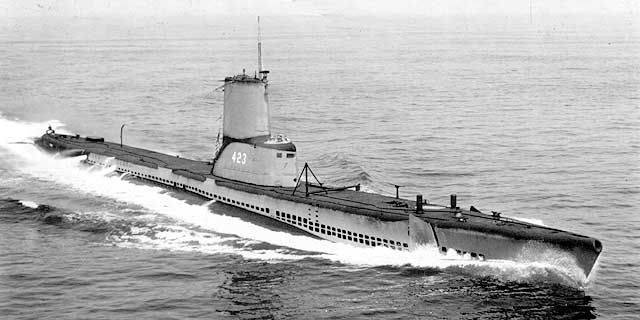
It should be noted that not the best day was chosen for the exercises. The sea was stormy, and a thick fog was above the water. "Kochino" was under the snorkel, while the waves regularly overwhelmed him, which caused the valve to operate, and the diesel engine periodically suffered from a lack of air. To control the situation in the engine compartment headed foreman. A few minutes later, the submarine was shaken with a thump, similar to a collision with a large floating log. However, the situation was much worse: an explosion occurred in the battery compartment and a fire started. The situation was aggravated even more, since hydrogen was released from the batteries during the combustion process, and this could cause a secondary, even more powerful explosion. And it happened.
The submarine made an emergency ascent. On the underwater communication system, an incident was reported on Taek. After the ascent, Benitets tried to assess the scale of the accident: the entire battery compartment was caught in a fire, the engine rooms and the central post were filled with toxic products of combustion. The commander gave the order to most of the team to climb the upper deck. But the huge waves that occasionally rolled over the deck were no less dangerous for the sailors.
For a long fifteen hours the crew struggled in vain with fire. As a result, Benitets ordered everyone to go to "Taek", which was nearby all this time, but because of the stormy sea, she could not really help. An attempt to send a life raft from it ended with the death of six sailors after the waves turned over. A few hours had to maneuver "Taek" to get closer to "Kochino". Then a narrow ramp was thrown between the boats, along which the crew of the dying boat moved to Taek.
The death of "Kochino" immediately became the property of the media, and the Soviet newspapers, naturally, commented on the incident in the spirit of claims to the United States, emphasizing "too suspicious maneuvers of American ships near the shores of the USSR." At the same time, not a word was said about the reconnaissance mission of the submarine either in our press or in the foreign one.
Despite what happened, in the highest circles of the US Navy, they did not doubt for a moment the need for this kind of activity, still, year after year, sending increasingly sophisticated submarines to the Soviet shores. That is why many tragedies in the depths of the sea were still waiting in the wings.
One of the dramatic stories that, despite its relatively successful completion, forced to radically reconsider the views of the US Navy command on underwater espionage, happened in the Pacific Ocean eight years after the death of Kochino.
By that time, submarines had already proven to be indispensable in a variety of intelligence campaigns. In recent years, with their help, a lot of valuable information was obtained on the development of the submarine forces of the Soviet Navy. In particular, the data on the construction of large series of new diesel submarines of the "Whiskey" and "Zulu" types (projects 613 and 611) were confirmed. Of particular concern to the command of the Navy caused information about the armament of submarines, such as "Zulu", cruise missiles.
One of the priorities of such reconnaissance campaigns was to patrol the Soviet coast, which aimed, firstly, to identify signs of increased readiness of the Navy and preparations for a possible attack on the US, and secondly, to provide invaluable information about the capabilities and features of Soviet tactics ships and submarines in case of a collision with them in wartime.
American submarines built in the fifties were originally adapted for reconnaissance missions: equipped with snorkel and electronic reconnaissance equipment with retractable antennas, which allowed conducting reconnaissance from the periscope depth. The commanders of the boats, in contrast to the Benitets mentioned above, have already entered into the taste of reconnaissance romance. And in the pursuit of Soviet secrets for them there were no barriers, even the concept of "territorial waters" was perceived as fiction. Now the duration and distance of entry into alien tervods, especially at periscope depth, with raised retractable devices, determined the place of the boat commander and his crew in the unofficial table of ranks in the submariners community. It has become a special form of bravado and a way to excel. The admirals in the fleet, as a rule, turned a blind eye to such risky antics, and the higher authorities, who, in the first place, were interested in the actual intelligence information, did not bother themselves with such trifles.
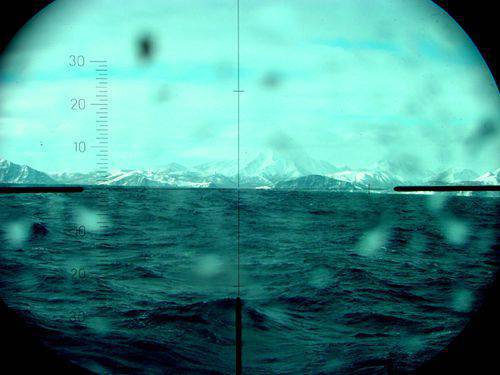
On the Pacific, the foremost American naval base in Japan, Yokosuka, served as the main espionage lair. Here the boats arriving from Pearl Harbor and San Diego were undergoing final preparations before a difficult and dangerous voyage to the Soviet shores. Here, crumpled and not very, they returned. For the time being without serious incidents. However, in the 1957 year, a story happened with the Pacific boat "Gageen", which forced us to reconsider our further plans to use diesel submarines off the coast of the enemy with similar goals.
Gadjen came to Yokosuka 21 July 1957 of the year. Commanded the submarine lieutenant-commander Norman G. Bessak. On board the boat were four scouts who, replacing each other, controlled the radio. In the first days of August, "Gadjen" went on a campaign and took up a position slightly south of Vladivostok. After a short respite, the boat headed to the 12-mile zone, which was Soviet territorial waters. It should be noted that at the same time Bessak was “good” even to violate the three-mile border.
Nightly "Gadzhen" retired for 30 miles into the sea, made ventilation and recharging of batteries, and returned to the position by dawn. Two weeks passed without incident. It all started on the evening of August 19. As a result of the watchman’s error, a submarine was thrown to the surface for a period of time. If we take into account the radio interception station that raised more than 10 meters, then there is nothing surprising in the fact that the ships of the Soviet Navy, which were in the area, discovered the "Gadjen" and began to pursue.
The boat plunged a hundred meters, hoping to hide under a layer of jump from the active signals GUS of our ships. The tragedy of the situation was aggravated by the fact that the boat had almost discharged batteries, which provided only a small speed. In addition, the crew suffered from a glut of carbon dioxide in the air.
Four of our anti-submarine ships relentlessly followed the boat. Periodically, they dumped low-powered depth charges, with the aim of psychological impact on the crew, forcing him to ascend. Apply the Soviet ships combat depth charges - the American submarine, no doubt, would have been destroyed.
What only tactical tricks and tricks did not apply Norman G. Bessak, it was all in vain. After many hours of trying to break away, the situation on the submarine escalated to the extreme. At dawn 21 August, the commander gave the order to ascend to the periscope depth. The advanced snorkel did not even have time to take a few "sighs", as the command was given for urgent immersion, since one of the Soviet anti-submarine ships was going straight to the retractable devices that appeared from the water.
As the situation continued to aggravate, the commander realized that in any case it would be necessary to surface under the periscope, and possibly also in the surface position. The Americans took all measures in the event of the seizure of a submarine. Documents packed in bags with cargo, the team received a personal weapon. As soon as the boat surfaced, Bessak sent a message about the accident to Yokosuka. Rising to the bridge, the commander saw a pair of small anti-submarine ships of the Soviet Navy, stationed nearby. The submarine was requested by the international code of signals, who they are and why they are in Soviet territorial waters. The Americans responded: "We are the US ship. We are going to Japan." The Soviet ships received a request to leave our waters as soon as possible. When "Gadjen", already at full surface, was leaving the site of the recent "battle," the bewildered signalman reported to Bessak: "The Russians thank us for the joint anti-submarine exercise."
Although everything ended well: no one was killed, even injured, no serious damage, and everyone returned to the base - however, despondency reigned among the crew members. It was a defeat. This was the first time since the beginning of the Cold War, when the American submarine was forced to surrender, surface, and thus discover the nature of its mission. “Gagen” was met in Yokosuka without the usual official celebrations. Bessak was transferred to the coast guard service, and in order to prevent the spread of rumors, the submarine itself was immediately sent on an underwater world tour.
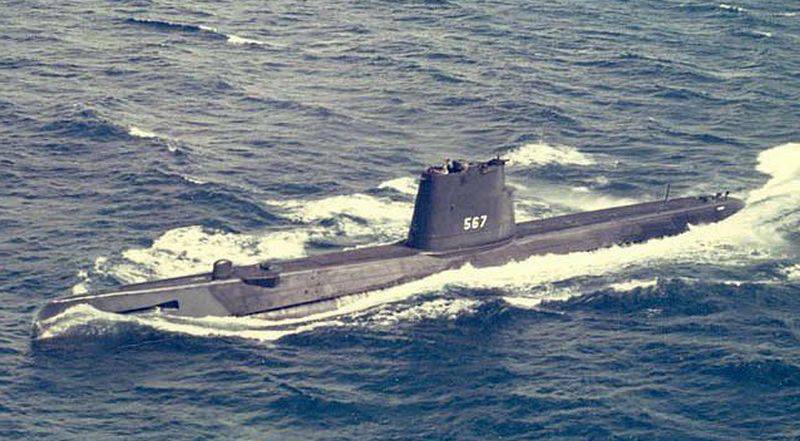
At the beginning of 1958, a similar incident occurred with the American boat - "Vekhu". Well, the number of cases of detection of unidentified submarines in the Soviet territorial waters exceeded all expectations. Trying, in spite of the facts, to direct world public opinion in a certain direction, the Americans began an active information struggle. With the filing of some congressmen, the press was seized with hysteria over Soviet underwater expansion in American waters. It turned out that at least two hundred Soviet submarines visited the waters of the western and eastern coasts of America for a year and threatened the calm and full life of a simple American man in the street, whose reaction was not long in coming. Newspapers were literally inundated with reports of observed periscopes and cuttings of submarines. A certain miss, while scuba diving on one of the Florida beaches, discovered three Soviet submarines hiding at the bottom, and the venerable Texas farmer personally watched the periscope from the windows of his ranch, cutting through the waters of the Gulf of Mexico. Simple American "patriots" began to build guard towers on the coast and organize anti-submarine patrols.
And, of course, the military, in turn, were eager for revenge. It was necessary, by all means, to make the surface and show the press at least one Soviet boat. Admiral Gerald Wright, commander of the American Atlantic fleet, promised the whiskey box to the crew whose ship would be able to accomplish a similar task. As a result, the coveted prize was given to the commander of the Grenadir submarine, which in the spring of 1959 managed to record the ascent to the surface of a Soviet Zulu-type submarine off the coast of Iceland. Our submarine really came up for repair, a failed diesel, but the Americans rushed to present all this as a forced ascent after hours of pursuit.
After a series of similar incidents, the US Navy leadership decided to abandon the use of diesel submarines for reconnaissance purposes. New explorers of the deep sea emerged into the expanses of the World Ocean: the nuclear submarine fleet had already declared itself.
From the very beginning, American nuclear submarines (APL) began to participate in campaigns to the Soviet shores. Already in 1960, the Skipjack submarine under the command of William Behrens made the most audacious raid in the entire history of the Kola Bay, on the shores of which the main bases of the Northern Fleet were located. Later, in the same campaign, Berens observed the testing of the first Soviet Golf-class submarine armed with ballistic missiles.
Other nuclear boat commanders were not inferior to Behrens in recklessness. The desire to penetrate the most secret secrets of the Russians, to get as close as possible to the ships of the enemy, led to very dangerous incidents, right up to clashes, which almost ended in terrible sea catastrophes. In 1961, the Swordfish submarine collided with a Soviet boat off the coast of the Far East. In the early sixties, the Skipjack nuclear submarine, which had already been recalled, managed to ram the destroyer stern in the Barents Sea with its chopping. The submarine returned with deep marks from the destroyer's propellers. Such is the beginning of the reconnaissance raids of American submarines to our shores.
Sources:
Baikov E. Zykov G. Secrets of underwater espionage. M .: Veche, 2002. C. 3-12.
Sontag S., Drew K. The history of underwater espionage against the USSR. M .: Gaia Iterum, 2001. C. 7-14
Makarov O. Underwater spy thriller: The Secret. // Popular Mechanics, 2009, #4 (78), p. 32-36.
Yatsenko I. Submarines of the USA in special operations. // Sea collection. 2003. No. 3. C. 81-86.
Stalbo K. US naval presence. . // Sea collection. 1980. No. 1. C. 48-52.
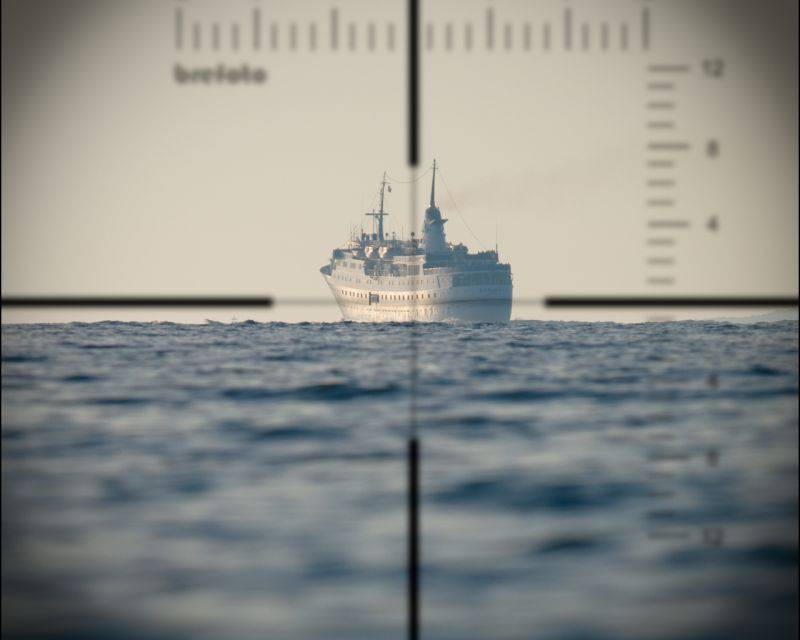
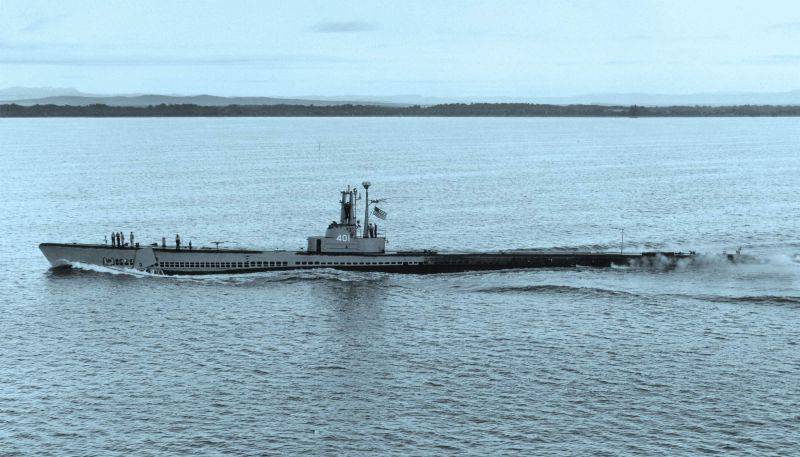
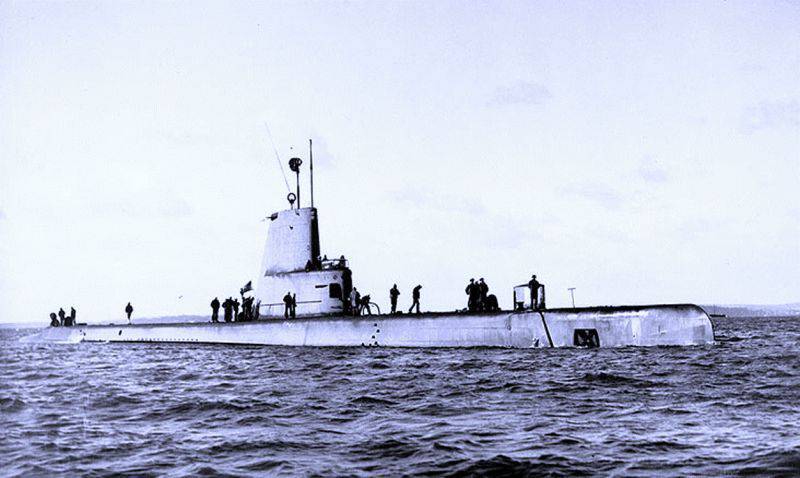
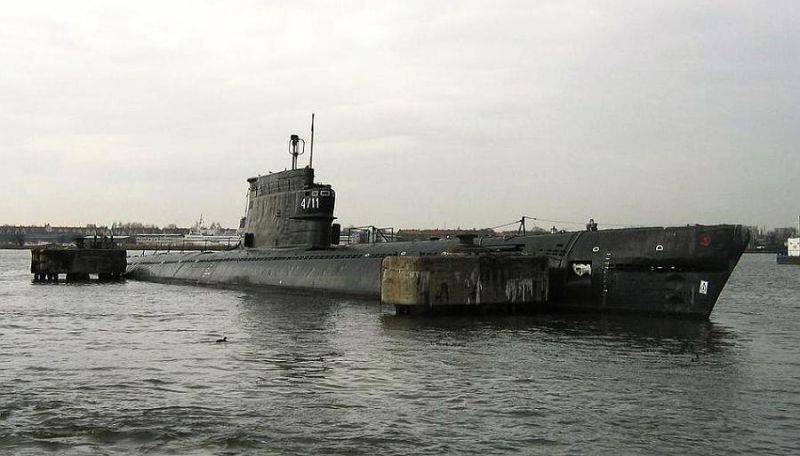
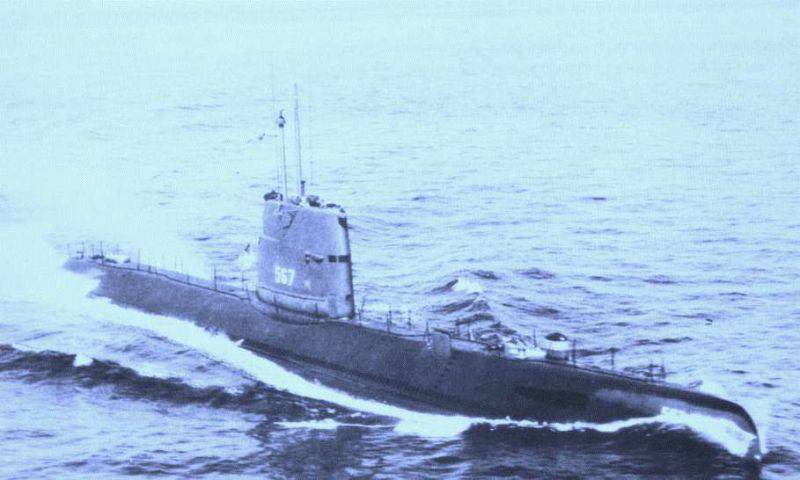
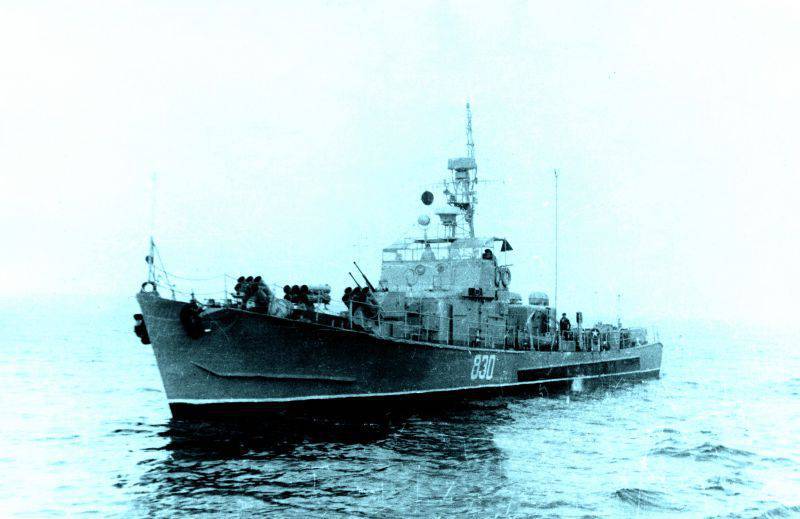
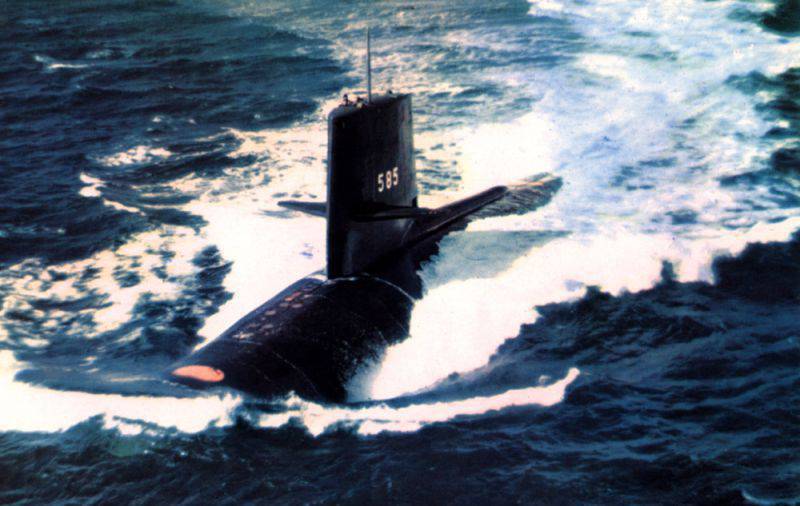
Information